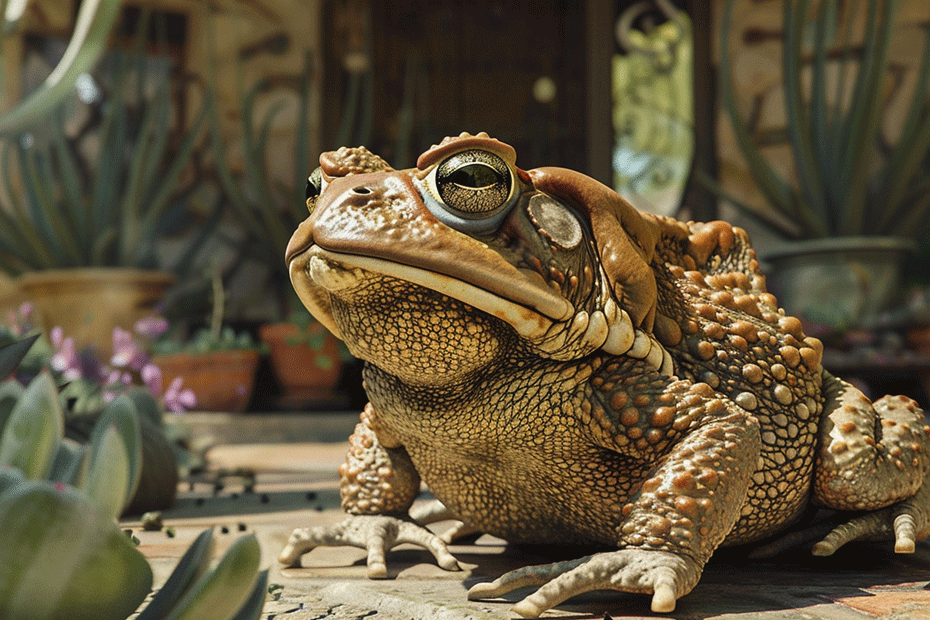Are you dealing with pesky Sonoran Desert toads invading your space? These amphibians may be causing a nuisance in your yard or around your home. In this text, you’ll discover effective methods to safely and humanely remove Sonoran Desert toads from your property.
From their distinctive appearance to their nocturnal habits, Sonoran Desert toads can pose a challenge when it comes to managing their presence. By following the right strategies, you can successfully deter these toads and prevent them from causing further disturbances.
Whether you’re a homeowner, gardener, or outdoor enthusiast, knowing how to handle Sonoran Desert toads is essential. Stay tuned as we explore practical tips and tricks to keep these amphibians at bay and maintain a toad-free environment.
Key Takeaways
- Sonoran Desert Toads, also known as Colorado River Toads, are large amphibians with olive-green skin, white warty bumps, and a toxic secretion for defense.
- These toads prefer arid regions, are nocturnal, and are attracted to outdoor lights and water sources near homes.
- The toxin secreted by Sonoran Desert Toads can cause hallucinations, cardiac issues, and respiratory distress if ingested or touched.
- To safely remove Sonoran Desert Toads, wear protective gloves, handle them gently, relocate them, and ensure toxin-free cleanup.
- Prevent future encounters by maintaining yard cleanliness, eliminating standing water sources, sealing entry points, and installing screens.
Understanding Sonoran Desert Toads

Physical Characteristics
Sonoran Desert Toads, also known as Colorado River Toads, are large amphibians with distinctive olive-green skin and prominent cranial crests. They can grow up to 7.5 inches in length and have white, warty bumps covering their bodies. These toads feature swollen parotoid glands behind their eyes, which secrete a milky toxin for defense. This potent defense mechanism poses a risk to pets and curious individuals.
Habitat and Behavior
Sonoran Desert Toads are primarily found in arid regions, favoring habitats like desert washes and sandy areas. Their nocturnal nature makes them active during cooler hours, seeking moisture and prey. During the monsoon season, these toads emerge to mate and lay eggs in temporary pools. They are attracted to outdoor lights and water sources, often venturing near homes in search of insects, making them a common sight in residential areas.
Continue reading for practical ways to handle Sonoran Desert Toads and keep them away from your living spaces.
Risks of Sonoran Desert Toads

Toxicity of Sonoran Desert Toad Secretions
- Sonoran Desert Toads secrete a potent toxin called 5-MeO-DMT.
- The toxin can cause hallucinations, cardiac issues, and respiratory distress if ingested or touched.
- Keep pets and children away from Sonoran Desert Toads to prevent accidental contact.
- Ingesting or touching the toad can result in severe health complications.
- Promptly seek medical attention if exposed to their toxins.
Action Point: Educate yourself and your loved ones about the risks posed by Sonoran Desert Toads to ensure safety.
Techniques to Safely Remove Sonoran Desert Toads

Identifying Sonoran Desert Toads
- Distinct Features: Gray or brown skin with luminous glands behind the eyes.
- Size: Between 4 to 7.5 inches long.
- Habitat: Typically found in Arizona and California.
DIY Removal Methods
- Use Gloves: Wear protective gloves to avoid contact with toxins.
- Gentle Handling: Tolerant species, gently guide them into a container for relocation.
- Release Safely: Place them in a remote area away from your property.
- Clean Up: Ensure your space is toxin-free by cleaning any residue.
- Expert Assistance: Contact local wildlife control for experienced handling.
- Safety First: Professionals equipped with protective gear for safe removal.
- Legal Considerations: Some regions have specific regulations on handling protected species.
Remember, swift and safe removal is key to maintaining a secure environment.
Preventing Future Sonoran Desert Toad Encounters

Yard Maintenance
- Regularly mow your lawn and trim vegetation to reduce hiding spots for Sonoran Desert Toads.
- Remove standing water sources such as puddles or containers to deter toads from breeding in your yard.
- Keep your yard clutter-free to limit areas where toads can hide.
- Seal gaps and cracks in walls or foundations to prevent Sonoran Desert Toads from entering your home.
- Install screens on windows and doors to keep toads out while allowing ventilation.
- Inspect your property regularly for any new entry points that toads could use.
Conclusion
By following these preventive measures, you can effectively deter Sonoran Desert Toads from invading your property. Maintaining a tidy yard, fixing any entry points, and staying vigilant in your inspections are key to keeping these toads at bay. Remember, a proactive approach is your best defense against unwanted encounters with these amphibians. Stay informed, take action, and enjoy a toad-free environment.

Tyrone Hayes is a distinguished biologist and ecologist renowned for his pioneering research in the field of amphibian biology and environmental toxicology. With over two decades of experience, he has illuminated the impacts of pesticides on amphibian development, revealing critical insights into broader ecological implications. Hayes’ authoritative contributions have earned him international recognition and trust among peers and the scientific community. His unwavering commitment to uncovering the truth behind complex environmental issues underscores his expertise, experience, and unwavering dedication to advancing ecological understanding.
